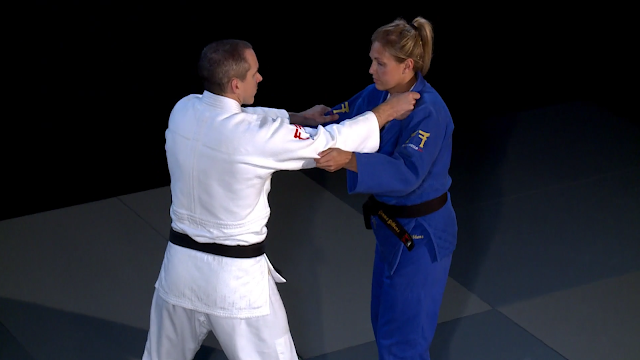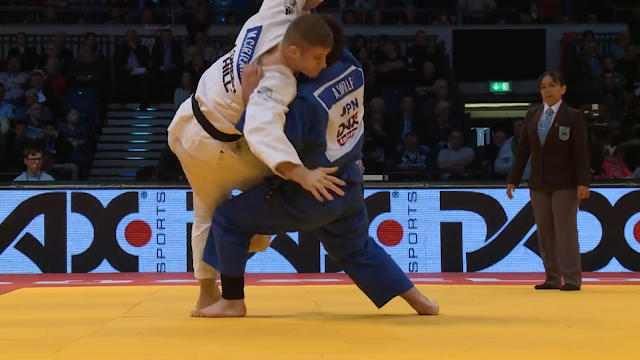When we first started KL Judo in 2015 people thought we were crazy trying to start a club for working adults. Everybody focuses on children, they say, because children are so much easier to attract and retain. Parents like judo because it teaches discipline and respect. Parents send their kids to judo classes, so their attendance is all but guaranteed. In contrast, working adults typically have all kinds of work and family obligations that often get in the way of training. It's much harder running an adult class.
Well, as I always say, we don't do something because it's easy.
We do it because it's hard.
Four years later, and despite all odds, we have managed to make it work. When we first started out,
we had just three core members. Today, we have nearly 30 active members. Visitors from other clubs (including foreign ones) always marvel at the number of senior players we have on the mat.
How do you guys do it, they always ask. With a lot of hard work, we always reply. But in case anyone should want to do something foolish like us and actually build a judo club for working adults, here's the formula that works for us:
1. Web presence and social media are crucial
If you believe in the mantra "Build it and they will come" you will be sorely disappointed. You have to do proactive and consistent marketing. And the best platforms for that is the web and social media. So have a professional website done with lots of information on it. Also constantly update your social media pages. We usually stream our sessions and also post pictures and highlights. This gives prospective members a good sense of how active we are and what our training program is like.
2. Forget the politics and focus on developing your club
Judo politics is a scourge and a bane that seems to be universal. I talk to my Singaporean judo friends and they say there's a lot of politics there. I talk to my Indonesian friends and they say there's a lot of politics there. I talk to my American friends and they say the same thing. So this is not exclusive to Malaysia, where judo politics is also rampant despite the fact that judo is such a niche, tiny little sport. I've always steered clear of politics and instead focused my energies on improving the judo club so that my players have a good program and a good place to train.
3. Provide proper infrastructure
Yes, it's possible to train in a bare bones environment, in a dingy room with flimsy mats. But it's much nicer to train in a place that's properly furnished with good equipment. That costs money but if you want your players to have a good training environment, you can't be a Chinaman about it. These are the key things we've invest in for our players:
a) Big Screen TV: Useful for showing competition clips for demonstration and illustration purposes
b) Good Mats: Nobody likes to fall on hard or thin mats. We have 5cm mats so our players' falls are well cushioned.
c) Crash Pads: For big throws, you need a crash pad for nagekomi practice. Otherwise forget about practicing big throws.
d) Live Cameras: You could do live streaming using a mobile phone but the video will be grainy because through mobile, the highest resolution you can get on Facebook Live is 480p. We invested in a special livestream camera called Mevo that allows Facebook Livestreams to be 720p. That's why our livestreams are so clear.
e) Air Conditioning: This is the one thing that is probably considered more of a luxury than a necessity. But we have it. (Yes, we spoil our players).
4. Have a structured training program
For players to progress, the club must have a training system. Unfortunately in far too many clubs, the system is called "the whims and fancies of the sensei on that day". They don't come prepared with any training program in place. That's no way to run a judo session, but in my time I've been to many clubs like that, and many of my judo friends around the world complain of the same thing. So, again, this is something rather endemic to judo clubs. It takes a lot of time to plan and prepare for a class. Working out what to teach and what drills to do and editing video examples from competition to show your players, all this takes time. But I can't imagine not doing it. Perhaps it's because I have taught academic classes in colleges before (not judo but journalism) and preparing a lesson plan is absolutely crucial. Just showing up and winging it is a waste of everyone's time.
5. Ensure a diverse and critical mass of players on the mat
One of the biggest challenges any player has is the lack of training partners. That's why it's important to have not just a critical mass of players but broad diversity as well. You need players of all sizes and ideally have both genders well represented. No lightweight likes to train in a club where everyone is big and heavy.
No heavyweight likes it when everyone else is a lightweight. And no
girl likes to train in a club full of only guys. Resolving that goes back to proactive marketing and recruitment to get a regular flow of new members. Realize that turnover in membership is normal. Players come and players go. Over time, you will have people drop out. So, you need to regularly get new players in or your club will shrink.
6. Have enough randori
I realize that there are some clubs that focus on kata or very light judo with minimal randori. There is probably a niche market for that. But most active people who join judo want to spar. You don't join badminton just to do drills. You don't join basketball just to do drills. You don't join soccer just to do drills. And so it is with judo. Technical training, uchikomi, nagekomi, drills -- all of that are necessary for your judo development. But without randori, not only will your training be incomplete, you won't have any fun. Playing judo means randori. I'm always surprised when I visit a club that has only 20 minutes of randori or sometimes no randori at all. We do at least 45 minutes of randori (newaza and tachi-waza) and sometimes even longer than that. That's because we want our players to actually have a chance to play judo.
7. Foster a good culture
When we first started his club, I was guided by the idea of building a club that I, myself, would love to train in. That means having the right infrastructure in place but it also means having players with a good attitude on the mat. To foster the latter, you need to establish a strong club culture. If some new players come in and is disruptive to the club culture, you will need to intervene and do something or risk losing it all because of one bad apple who negatively influences the others. Judo is such a niche sport, with so few people interested in it, you generally don't want to lose any members. But if a particular member is problematic and disruptive to the class, it's much better to lose them. That means less money going into the club and fewer players on the mat but losses like that are necessary to maintain the club culture.
8. Focus on your players.
This goes back to my point about judo politics. Instead of wasting your time on politicking and jockeying for positions and power, focus on building up your club
and focus on the needs of your players. Your players are what makes up your club. Without them there is no club. So focus on their needs. They don't need you to hinder other clubs or get some high-ranking position in the sport's governing body. What they need and want is good training. So that's what you should provide. Focus on that. Always.











